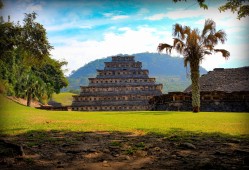The Enchanting World of Butterflies:A Journey Through Their English Names and Lore
- 百科大全
- 2025-05-24
- 30
Butterflies are a marvel of nature, their delicate wings adorned with vibrant colors and intricate patterns that have captivated humans for centuries. In the English language, these creatures of flight have been given names that reflect their beauty, behavior, and the cultural significance they hold. This article will take you on a journey through the enchanting world of butterflies, exploring their English names, the lore surrounding them, and the fascinating characteristics that make each species unique.
The English language boasts a rich vocabulary when it comes to butterflies, with names that often evoke the grace and elegance of these insects. The term "butterfly" itself is thought to have originated from the Old English word "buterflēoge," which was a compound of "butere" (butter) and "flēoge" (flying creature). This name may have been inspired by the yellow color of some butterflies, which was reminiscent of butter.
One of the most well-known butterflies in English-speaking countries is the Monarch (Danaus plexippus). This species is named for its regal appearance, with its striking orange and black wings that are a symbol of majesty. The Monarch is famous for its incredible migration, traveling thousands of miles from North America to Mexico or California to escape the cold winter months.
Another fascinating species is the Swallowtail (Papilio machaon), a group of butterflies known for their large, swallow-like tails on their hindwings. The name "Swallowtail" is a direct reference to the shape of their wings, which resemble the forked tail of the swallow, a type of bird. Swallowtails are often associated with grace and agility in flight, much like the swift birds they are named after.

The English language also has names for butterflies that reflect their habitats or behaviors. For example, the Fritillary (Speyeria) is named after the Latin word "fritillus," which means "little dice," due to the checkered pattern on their wings that resembles the spots on dice. Fritillaries are often found in meadows and grasslands, and their name captures the playful nature of these environments.
In some cases, the English names of butterflies are derived from their physical characteristics or the sounds they make. The Peacock Butterfly (Aglais io), for instance, is named for the iridescent blue-green color of its wings, which is reminiscent of the vibrant plumage of the peacock bird. The Peacock Butterfly is a symbol of beauty and transformation, much like the mythical creature it is named after.
The English language also has names for butterflies that are steeped in folklore and mythology. The Mourning Cloak (Nymphalis antiopa) is one such example. This species is named for the dark, velvety wings that resemble a cloak of mourning, and it is often associated with the idea of loss and remembrance. The Mourning Cloak is a symbol of the fleeting nature of life and the enduring power of memory.
Butterflies have long been a source of inspiration for poets, artists, and naturalists alike. In English literature, they are often used as symbols of transformation, hope, and the fleeting nature of beauty. The metamorphosis of a butterfly from a caterpillar to a winged adult is a powerful metaphor for personal growth and change.
In many cultures, butterflies are also seen as messengers of the soul or as guides to the afterlife. This belief is reflected in the English name of the Morpho butterfly (Morpho helenor), which is derived from the Greek word "morphe," meaning "form" or "shape." The Morpho is known for its iridescent blue wings, which seem to change color as they fly, embodying the idea of change and transformation.
The English names of butterflies are not only a reflection of their physical attributes but also a testament to the cultural and emotional significance they hold. The Red Admiral (Vanessa atalanta), for example, is named for its red and black wing pattern, which resembles the uniform of an admiral in the British navy. This species is often seen as a symbol of courage and leadership.
In conclusion, the English names of butterflies are a rich tapestry of language, culture, and nature. They tell stories of beauty, transformation, and the deep connection between humans and these enchanting creatures. As we continue to study and appreciate butterflies, we are reminded of the delicate balance of our ecosystem and the importance of preserving the habitats that support these beautiful insects. Whether it's the Monarch's incredible journey, the Swallowtail's graceful flight, or the Mourning Cloak's poignant symbolism, each butterfly carries with it a unique piece of our natural and cultural heritage.













